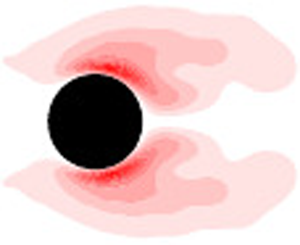Article contents
Phase-synchronization properties of laminar cylinder wake for periodic external forcings
Published online by Cambridge University Press: 05 October 2020
Abstract

We investigate the synchronization properties of the two-dimensional periodic flow over a circular cylinder using the principles of phase-reduction theory. The influence of harmonic external forcings on the wake dynamics, together with the possible synchronization of the vortex shedding behind the cylinder to these forcings, is determined by evaluating the phase response of the system to weak impulse perturbations. These horizontal and vertical perturbations are added at different phase values over a period, in order to develop a linear one-dimensional model with respect to the limit cycle that describes the high-dimensional and nonlinear dynamics of the fluid flow via only a single scalar phase variable. This model is then utilized to acquire the theoretical conditions for the synchronization between the cylinder wake and the harmonic forcings added in the global near-wake region. Valuable insights are gained by comparing the findings of the present research against those rendered by the dynamic mode decomposition and adjoint analysis of the wake dynamics in earlier works. The present analysis reveals regions in the flow which enable phase synchronization or desynchronization to periodic excitations for applications such as active flow control and fluid-structure interactions.
- Type
- JFM Rapids
- Information
- Copyright
- © The Author(s), 2020. Published by Cambridge University Press
References
REFERENCES
- 15
- Cited by





